Baiyun Mountain is a popular natural landmark in Guangzhou, renowned for its lush greenery and picturesque peaks. Its name, meaning ''white cloud'' in Mandarin, derives from the fluffy clouds surrounding the mountain after rain. The area encompasses various parklands featuring gardens, ponds, and sculptures. Covering about 21 square kilometres in the northeast of Guangzhou's city centre, Baiyun Mountain is classified as a national A5-grade scenic area. It has long been considered the most beautiful mountain in Guangzhou, with the highest peak, Moxing Ridge, rising to 382 metres above sea level. New attractions such as Mingchungu Natural Birdcage, Yunluo Botanical Garden, and Yuntai Garden add to the mountain's diverse landscapes, offering stunning views of the city and the Pearl River Delta. Additionally, visiting Baiyun Mountain is a great idea for your list of places to see in the Guangzhou area, along with Lotus Hill and Baomo Garden.
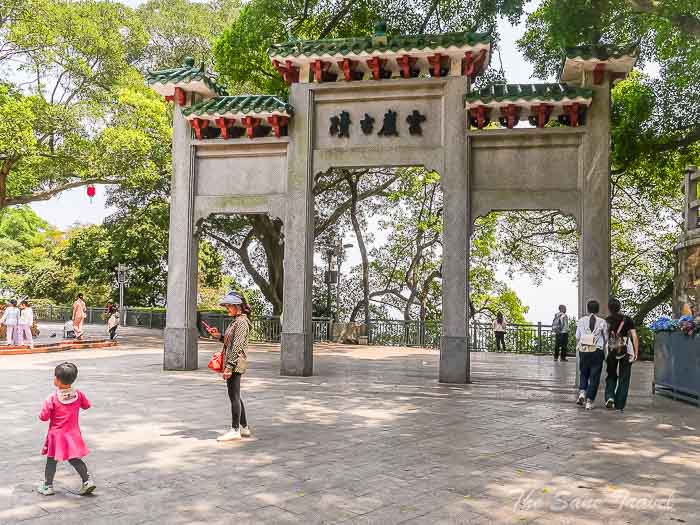
I recommend beginning your visit with a cable car ride.
Cable Car Ride to Cloudy Valley
Ride the cable car up Baiyun Mountain to reach Cloudy Valley, where you can enjoy stunning aerial views of the mountain landscape, city skyline, and trails below. The cable car ride is a convenient way to reach the top of the mountain with ease, suitable for people of all ages and fitness levels.
 While at Cloudy Valley, visitors can unwind and take in the views, purchase a snack from a nearby concession stand, or simply appreciate the natural surroundings. I opted to explore Mingchungu Natural Birdcage, followed by the Cloud of Dusk, before walking back to the south entrance of the park.
While at Cloudy Valley, visitors can unwind and take in the views, purchase a snack from a nearby concession stand, or simply appreciate the natural surroundings. I opted to explore Mingchungu Natural Birdcage, followed by the Cloud of Dusk, before walking back to the south entrance of the park.
Mingchungu Natural Birdcage
You can also explore China’s largest natural bird enclosure, spanning 56,000 square metres and housing over 150 different bird species, including rare ones such as red-crowned cranes and swans. Visiting this garden not only allows you to observe many fascinating birds and their behaviours, but also broadens your knowledge of different species, enhancing both the enjoyment and educational value of your visit. Take a leisurely walk by the stream and mountains, and interact with the birds in this tranquil setting.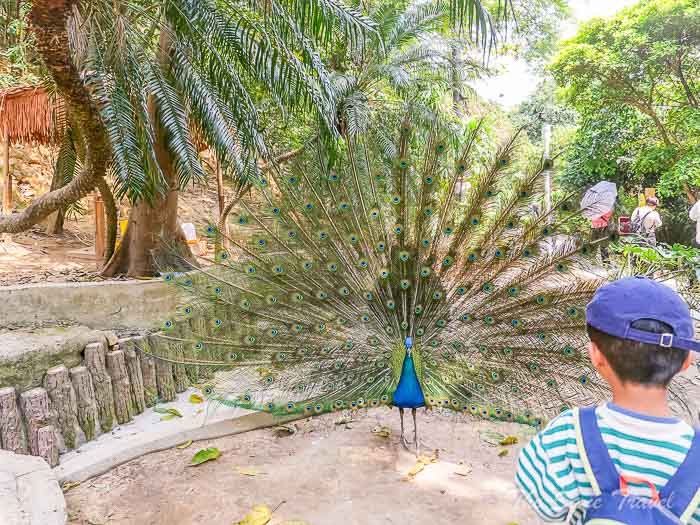
Cloud of Dusk
The Cloud of Dusk includes the Sightseeing Platform and Wanwang Pavilion, both famous for their picturesque sunset views. At dusk, visitors can enjoy the sunset and its vibrant colours from Wanwang Pavilion. The Cloud of Dusk and Mountaintop Park have become popular destinations for tourists seeking to appreciate the scenery and have a good time.
![baiyun thesanetravel.com 17]() Heading back to South Gate
Heading back to South Gate
The path back to the South Gate is several kilometres long. Enjoy blossoming trees, interesting tree roots and green lawns on your way.
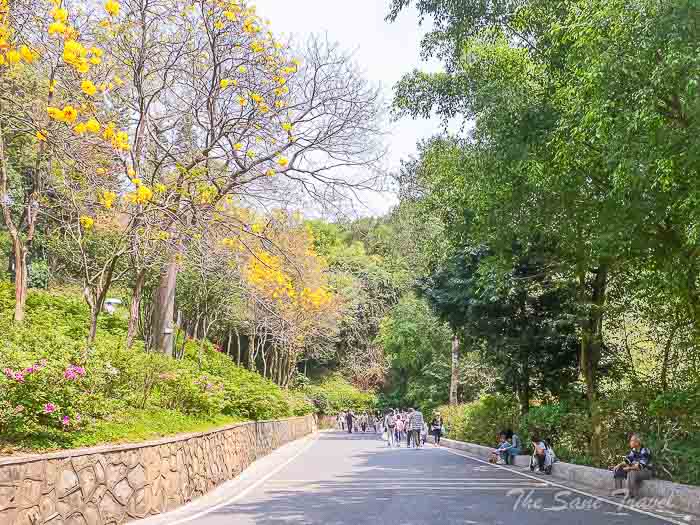
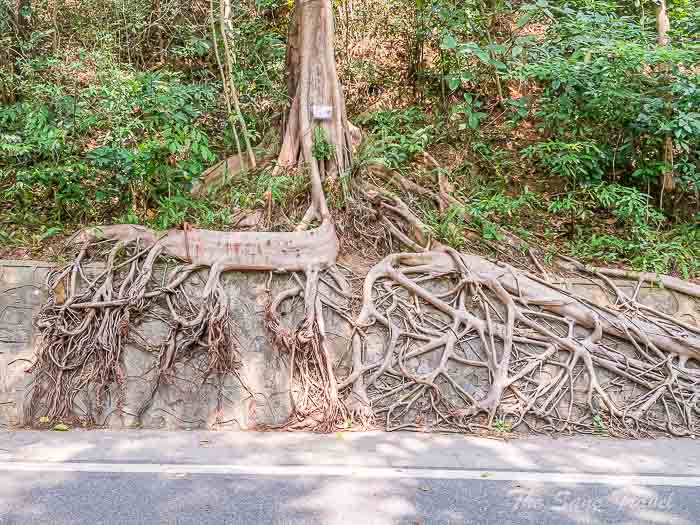
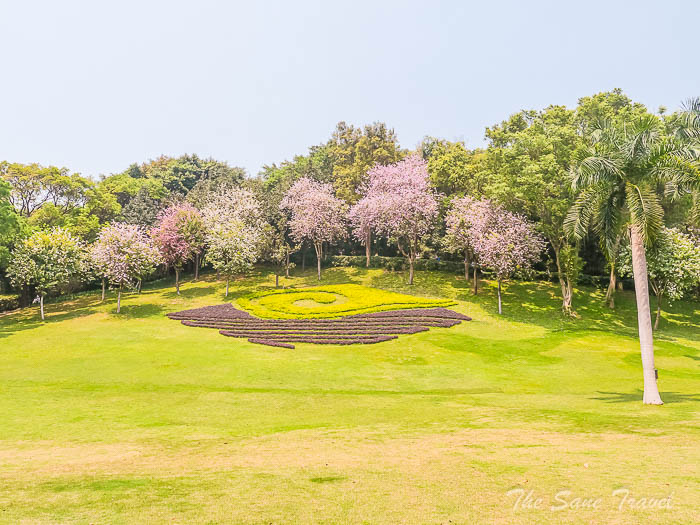
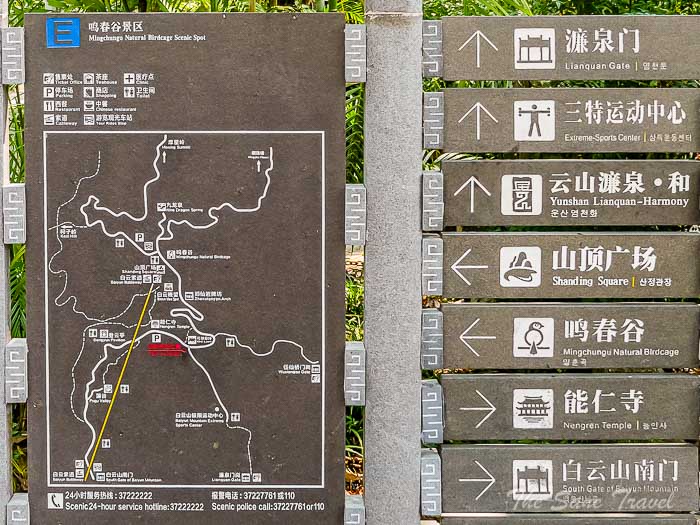
General’s Tomb
As you make your way back to the South Gate, be sure to stop by the tomb of a general from the late Qing dynasty to learn more about its historical significance.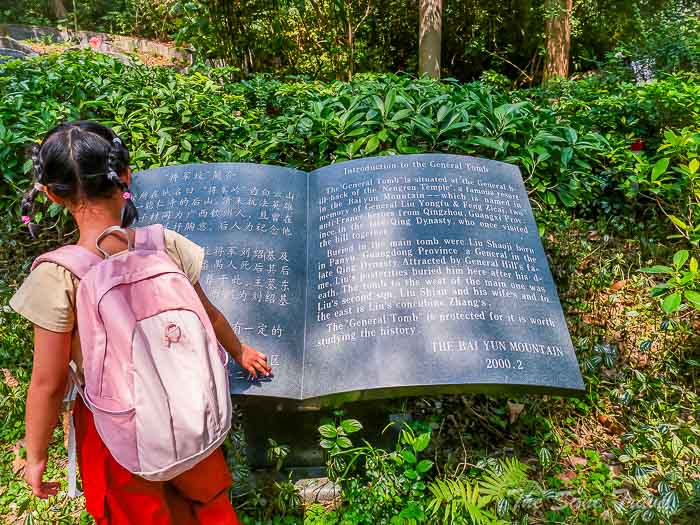
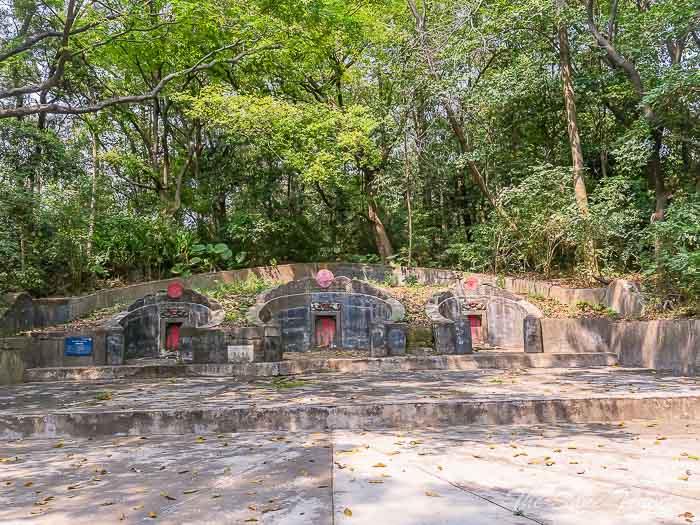
Yunluo Botanical Garden
The Yunluo Botanical Garden, which opened to the public in late 2024, is situated at the base of Baiyun Mountain and spans 86.6 hectares. Home to more than 1,500 plant species, the garden integrates plant conservation, ecological education, and leisure activities. It features themed sections such as the Rainforest Plant Garden, Orchid Garden, and Medicinal Plant Garden, along with the Flower City Art Museum and the Natural Education Museum, which offer informative exhibits and interactive experiences. In addition to its diverse flora, the garden protects rare and endangered species like Parashorea chinensis and Paphiopedilum emersonii. Its design emphasises harmony between nature and contemporary landscape architecture, creating a peaceful retreat for visitors.
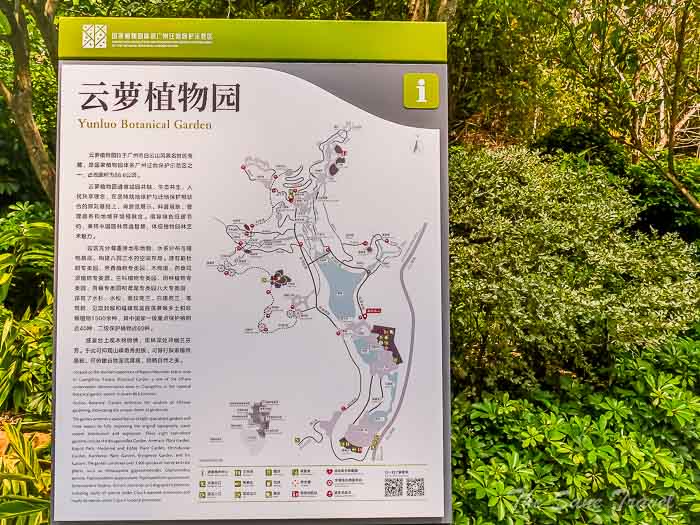

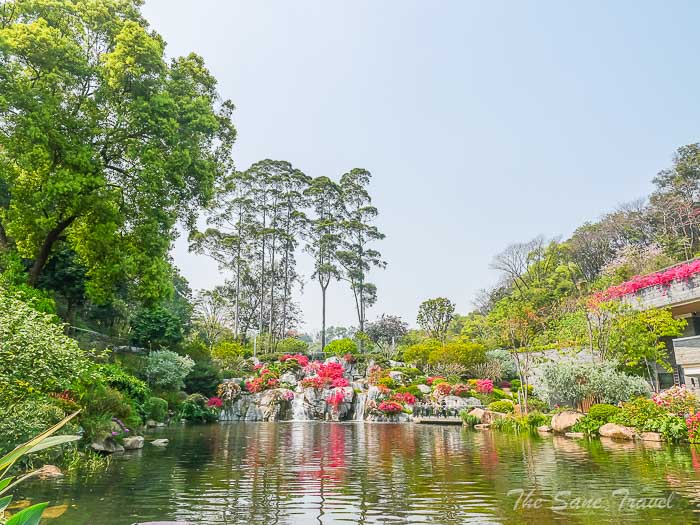
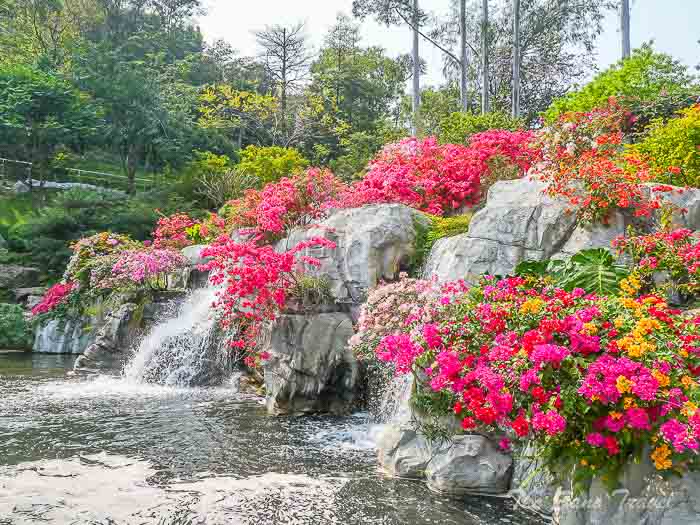

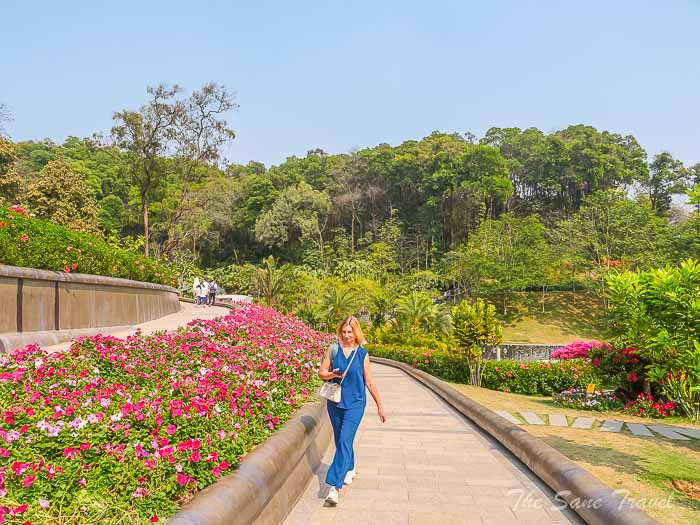
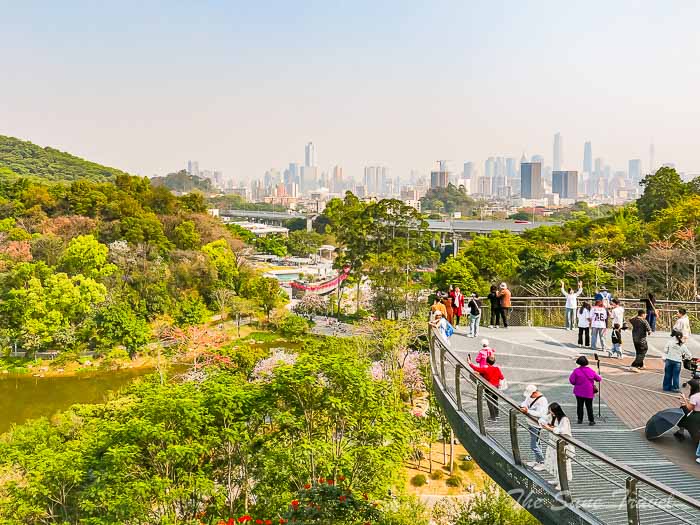
You can visit Yunluo Botanical Garden either at the beginning or the end of your tour of the Baiyun Mountain Scenic Area through its South Gate, as it is conveniently located near both the South Gate and the cable car station. Please note that an additional entrance ticket is required.
Since the Baiyun Mountain Scenic Area is extensive, I did not have the chance to explore every part of it. However, you might want to consider including some of the areas I missed in your itinerary. Here are a few suggestions.
Nengren Temple
Nengren Temple, situated on South Yunshan Road, spans an area of 10,000 square metres and was constructed in 1851. After restoration, it was made accessible to the public in May 1995. The temple comprises various halls, including Daxiongbao Hall, Ciyun Hall, Tianwang Hall, Dizang Hall, and Liuzu Hall, as well as a Bell Tower and a Drum Tower. The total floor space of the temple exceeds 1,000 square metres.
Sculpture Park
Located in the western section of Flying Goose Ridge on Baiyun Mountain, the Sculpture Park covers an area of 460,000 square metres. As the largest sculpture-themed park in China, it features numerous sculptures that depict the history of Guangzhou and its Lingnan cultural heritage. Visitors can appreciate modern art and delve into the rich culture of Lingnan at this location.
Moxing Ridge
Moxing Ridge, the highest point of Baiyun Mountain, rises to 382 metres and offers the most scenic vistas in the region. From the summit, visitors can enjoy a sweeping panorama of the Guangzhou skyline, with the Pearl River winding through the city and modern architecture blending harmoniously with the natural landscape. The views are especially breathtaking during sunrise and sunset, making it an ideal spot for photography and quiet reflection.
Huangpodong Reservoir
The Huangpodong Reservoir is situated halfway up the mountain and was created for both environmental and aesthetic purposes. The reservoir’s crystal-clear waters capture the reflections of the surrounding mountains and trees, creating a tranquil sanctuary rich in natural life. It is an ideal spot for leisurely walks and birdwatching, while the tranquil atmosphere also makes it a popular destination for meditation and Tai Chi among locals.
Mingzhulou Tourist Area
The Mingzhulou Tourist Area lies in the northwest region of Baiyun Mountain and covers approximately eight square kilometres. Key attractions within this scenic area include White Cloud & Pine, Pine Courtyard, Peach Ravine, Plum Blossom Valley, Pearl Building, Shuiyue Pavilion, Huangpodong Leisure Teahouse, and Returning Forest. The valley showcases a harmonious blend of vibrant plants, mountain streams, small bridges, and simple buildings that complement one another beautifully.
Yuntai Garden
Yuntai Garden is a botanical park located at the southern base of Baiyun Mountain, next to Yunluo Botanical Garden, showcasing a diverse collection of colourful flowers and unique plant species across its 250,000-square-metre expanse. Known for its perennial flowers, it is recognised as the largest landscape garden in China, featuring ornamental exotic plants. Modelled on Canada's Butchart Gardens, Yuntai Garden opened its doors in 1995 and boasts over 20 scenic spots that blend European design with oriental landscapes. Visitors can explore themed areas such as the Rose Garden, Bonsai Garden, and Tropical Plant Greenhouse, each of which offers excellent opportunities for photography, especially during the blooming seasons.
Luhu Tourist Area
Luhu Lake, also known as Golden Liquid Pool, spans 25 hectares and was created in 1958 as one of the top three reservoirs in the Baiyun Mountain Scenic Area. Jufang Park, situated on the north bank of Luhu Lake, is a 400,000-square-metre park themed around shade-loving plants. Nestled between the mountain and the lake, it also features the Children's Elysium, which offers a variety of amusement facilities, as well as the Luhu Golf Course.
Where to stay in Guangzhou
To fully appreciate all the city has to offer, it is best to stay for an extended period and choose a high-quality hotel. The five-star Guangzhou Garden Hotel is a luxurious option, offering exquisite cuisine, exceptional service, a beautiful garden, and cosy accommodations.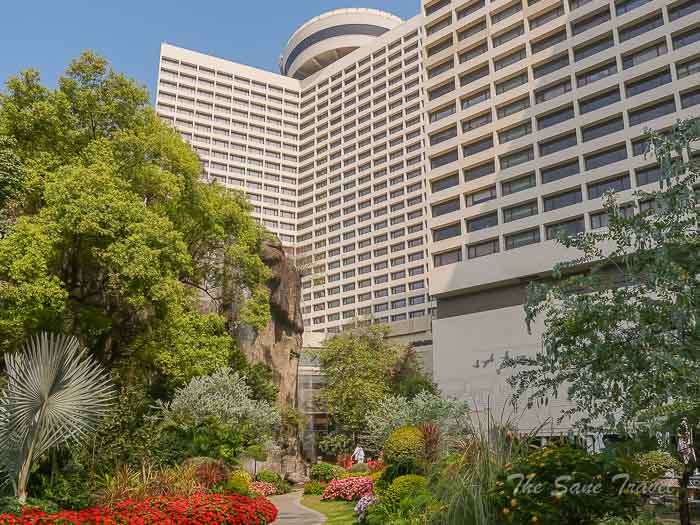
Practical Information
The Baiyun Mountain Scenic Area covers a large area and can be entered via the South Gate, West Gate, Jinzhong Gate, or the cable car station. Visitors can easily spend a whole day exploring the area, so be prepared for a lot of walking.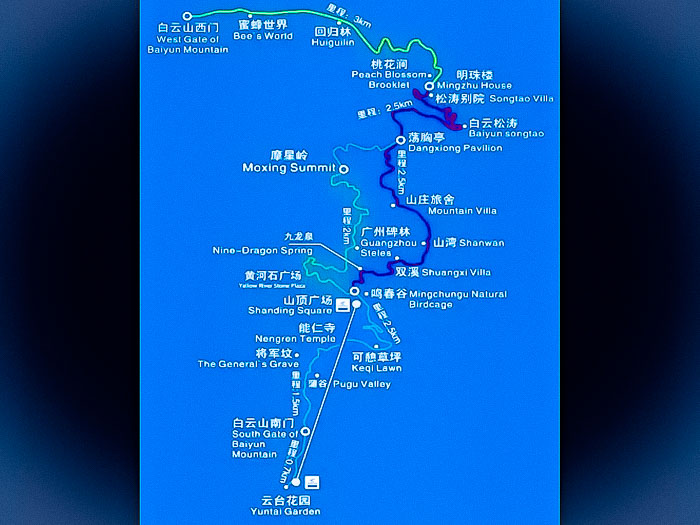
Taking the cable car up is a popular choice, with Didi services being the easiest way to reach the cable car station. Additionally, the newly opened Loop Metro Line 11, which stops at Yuntai Garden, is worth considering as an alternative means of transport. The area is open 24 hours a day, with walking paths accessible at all times. The cable car and electric shuttle service operate from 7:30 am to 8:00 pm, with shuttle routes connecting key locations throughout the area.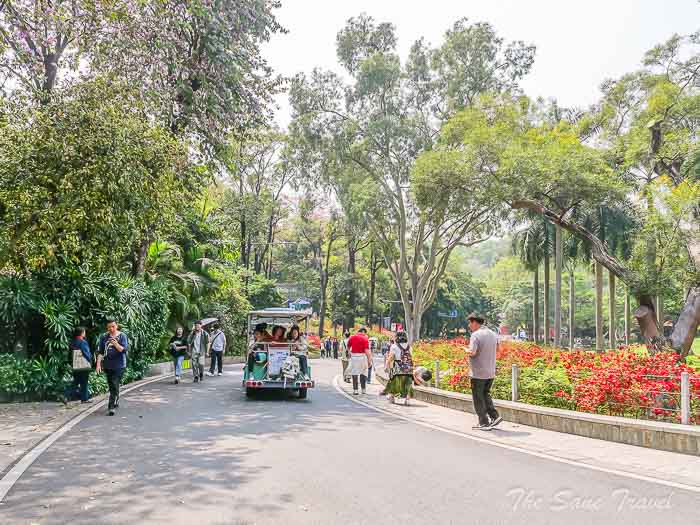 The shuttle routes are as follows: South Gate – Peak Square; Peak Square – Moxing Summit; Peak Square – Mingzhu House; Mingzhu House – West Gate. Be aware that since Yunluo Botanical Garden only opened towards the end of 2024, it may not be included on all maps at this time. It is recommended to visit on weekdays to avoid the crowds that gather on weekends and holidays. I was there on the weekend and I had to wait in this line for a cable car.
The shuttle routes are as follows: South Gate – Peak Square; Peak Square – Moxing Summit; Peak Square – Mingzhu House; Mingzhu House – West Gate. Be aware that since Yunluo Botanical Garden only opened towards the end of 2024, it may not be included on all maps at this time. It is recommended to visit on weekdays to avoid the crowds that gather on weekends and holidays. I was there on the weekend and I had to wait in this line for a cable car.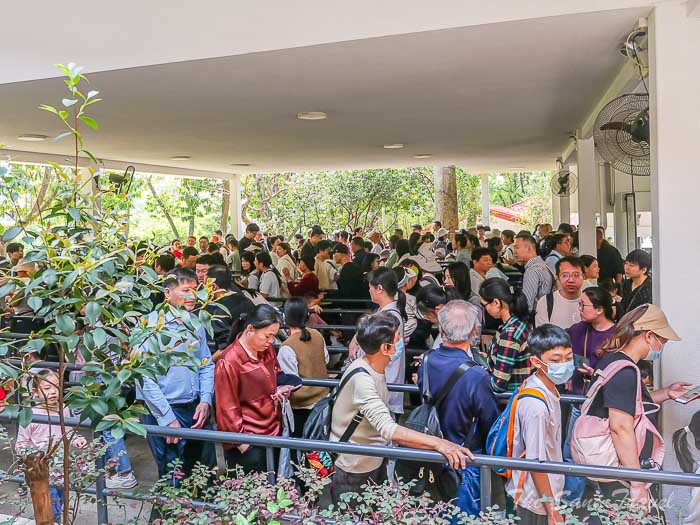
Like it? Pin it!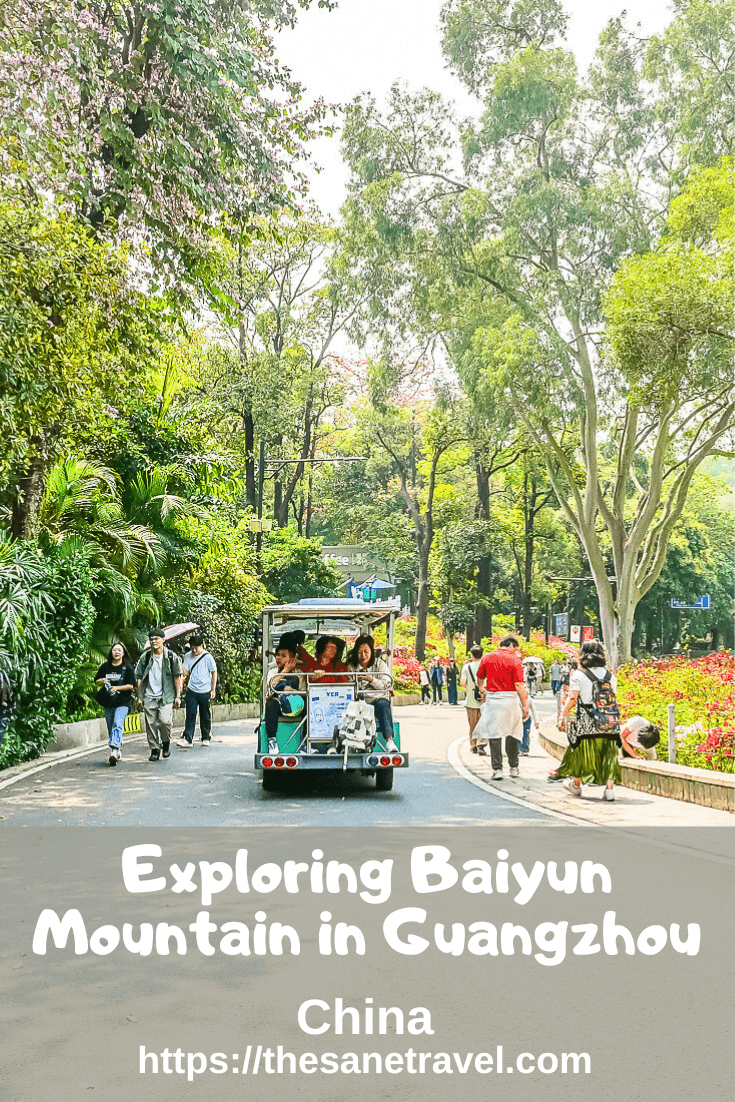
What did you think? Have you been to Baiyun Mountain? I would love to hear from you, so please add your comment below.
Author: Anita Sane

About the author
Anita is a part-time traveller, passionate photographer and a retired career woman from Latvia, travelling mostly solo for more than 15 years. She is a skilled travel planner who plans and executes her travels by herself. Anita wants to show you how to travel the world and open your mind to new experiences. Follow her on Facebook, Instagram, Pinterest, Twitter and Bloglovin.

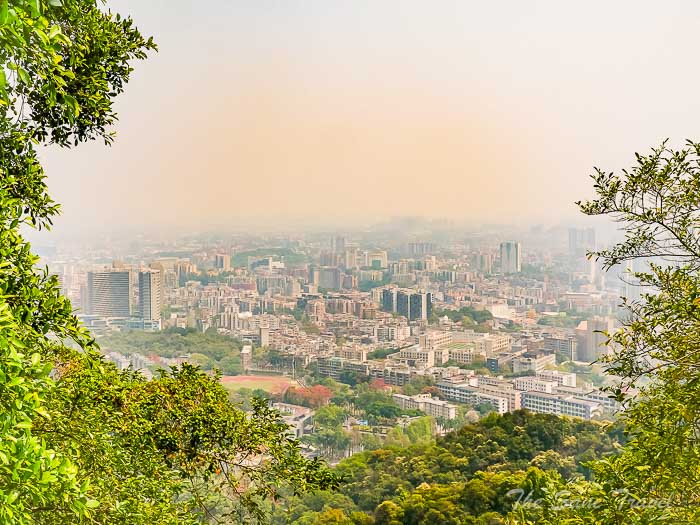 Heading back to South Gate
Heading back to South Gate
Report
My comments